The 30 Best Foods for Weight Loss
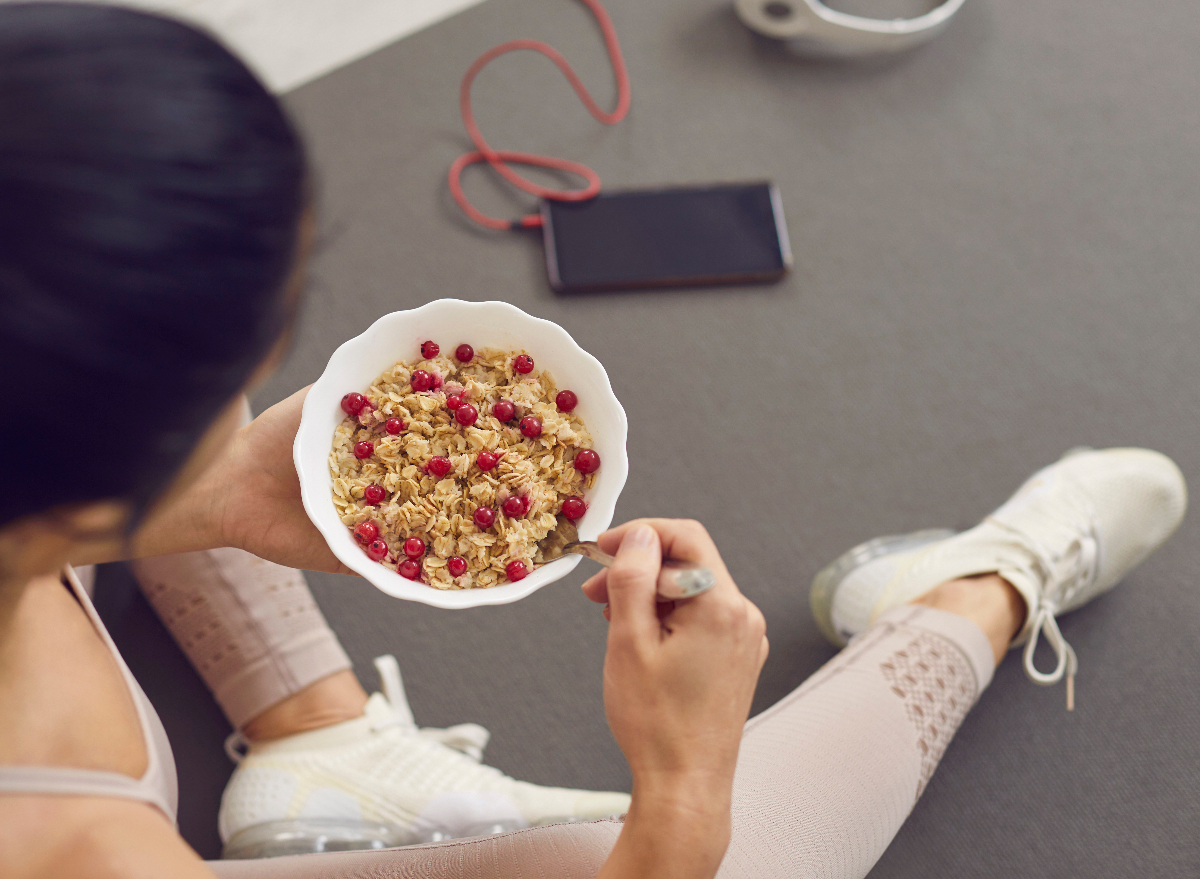
Good nutrition is the cornerstone of attaining and maintaining a healthy weight. And we're not talking about taking part in the latest fad diet promising fast fat loss. (I hate to be the bearer of bad news, but those never really work.) If dropping a few pounds is your ultimate aim, you'll need to nourish your body with a nutrient-dense, balanced diet, which requires knowing which items are considered among the best foods for weight loss.
"A balanced diet, one with adequate calories and a good balance of carbohydrates, protein, and healthy fats is essential to weight loss, as this will help you keep hunger at bay and resist the urge to overeat," says registered dietitian Katherine Brooking, MS, RD.
However, the focus here is on balance—no singular food will magically melt away fat.
"Specific foods may help you curb cravings, but no one food on its own will be enough. You'll need a balance of macronutrients and micronutrients to lose weight in a healthy way," says Brooking. "Fiber and protein, in particular, have been shown to help keep you fuller for longer."
Below, you'll find the best foods for weight loss to include in your weekly meal plan on the regular. After stocking up on these delicious foods, be sure to also check out 15 Best Healthy Breakfast Foods for Weight Loss.
Chicken breast
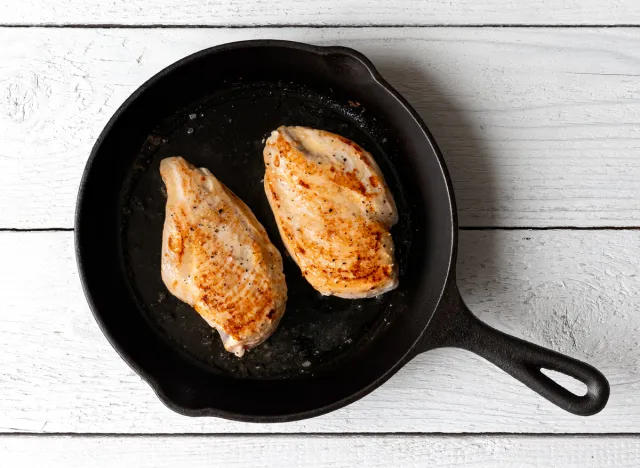
Chicken breast is the poster child for healthy foods that help you lose weight, and for a good reason. Just 3 ounces cooked of cooked chicken breast provides 26 grams of protein. A 2012 review in the British Journal of Nutrition also found that foods rich in protein provide the perfect trifecta that supports weight loss: They can help with satiety, maintaining muscle mass, and increasing your metabolism.
Cod
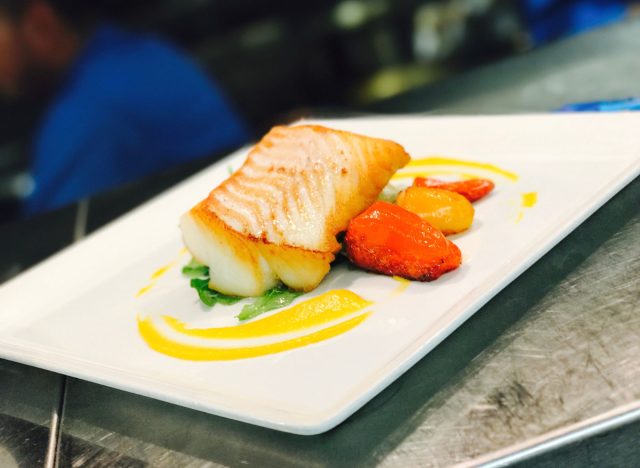
Make cod a part of your weekly meal plan, and you might notice the number on the scale drop. A 2009 study published in Nutrition, Metabolism and Cardiovascular Diseases found that folks with overweight and obesity who ate cod five times a week lost nearly four more pounds in two months than people who didn't eat seafood. Just make sure to skip the butter when you're cooking cod to avoid adding too many calories to your meal.
Artichokes
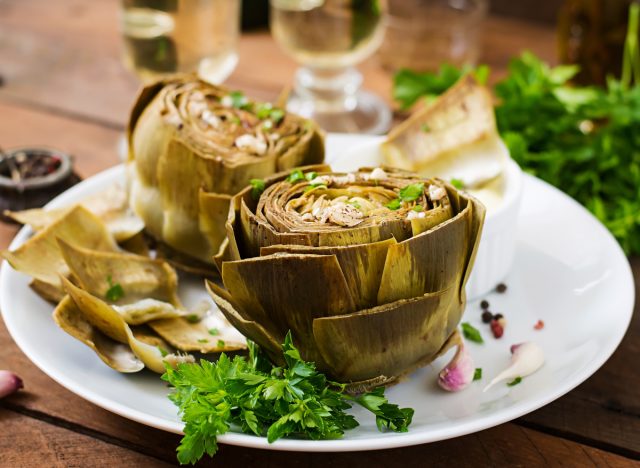
One of the highest-fiber foods you can get, artichokes are a superstar veggie that fits into most diet plans. One medium artichoke supplies about 7 grams of fiber—that's an impressive 25% of your Daily Value (DV), which can help keep you fuller for longer. A 2017 study published in the journal Annals of Internal Medicine also showed that people who ate more fiber lost nearly four more pounds than those who didn't eat as much of the nutrient.
Sweet potatoes
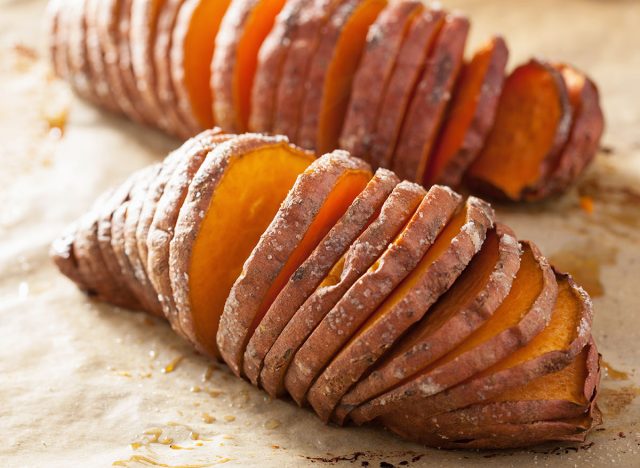
Sweet potatoes are loaded with dietary fiber—one sweet orange tater has nearly 4 grams of fiber, or 14% of your DV.
"This, in turn, promotes satiety, slows down digestion, and improves blood sugar level," says Brooking, echoing the 2017 aforementioned study in Annals of Internal Medicine. "Also, the fiber and carbohydrate content of this root vegetable provides sustainable energy and can be an excellent food option pre- and post-workout," she adds.
Whole grain bread
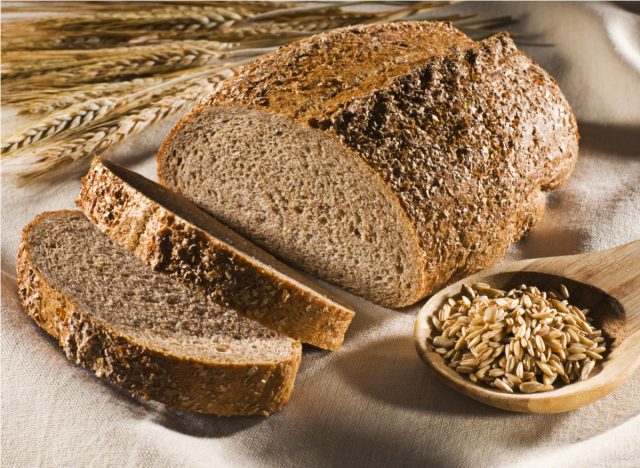
Gone are the days when folks feared bread. In fact, quality, whole grain bread (not the fluffy white loaves) can and should be a part of your weight loss diet. According to a 2010 study in The American Journal of Clinical Nutrition, people who ate three or more servings of whole grains per day were observed to have 10% less belly fat than those who didn't eat any whole grains.
Broccoli
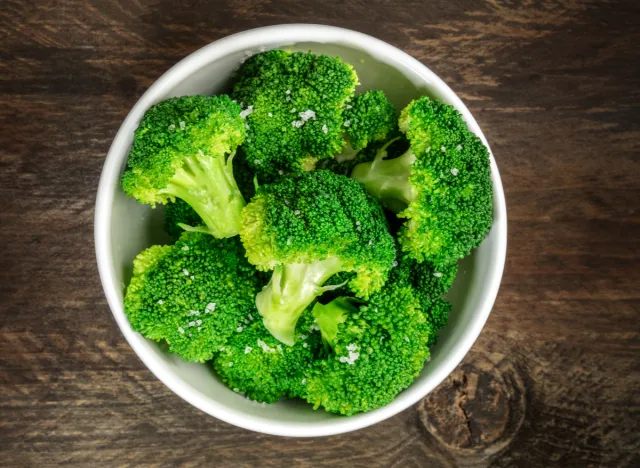
"Cruciferous vegetables like broccoli are high in fiber and low in calories, making them a stellar food for weight loss," says Brooking.
In fact, a 2012 Journal of Functional Foods study showed that eating more of these veggies is linked to a reduced incidence of obesity. Try stir-frying broccoli with garlic, then serving it alongside your favorite protein and a half cup of brown rice for a balanced meal.
Brown rice
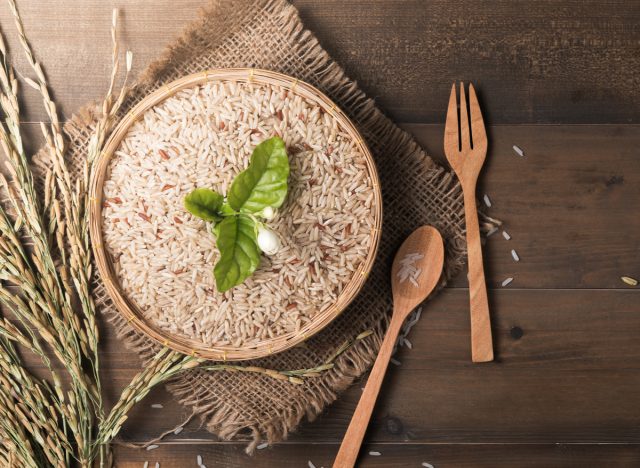
Speaking of brown rice, this stellar side dish is easy to digest and versatile. Eating whole grains, such as brown rice, regularly is linked to having less belly fat, per the previously referenced 2010 study in The American Journal of Clinical Nutrition. For a delicious and balanced meal, pair it with your favorite protein, like grilled chicken, tofu, or roasted salmon, and a non-starchy veggie, like zucchini or asparagus.
Beans
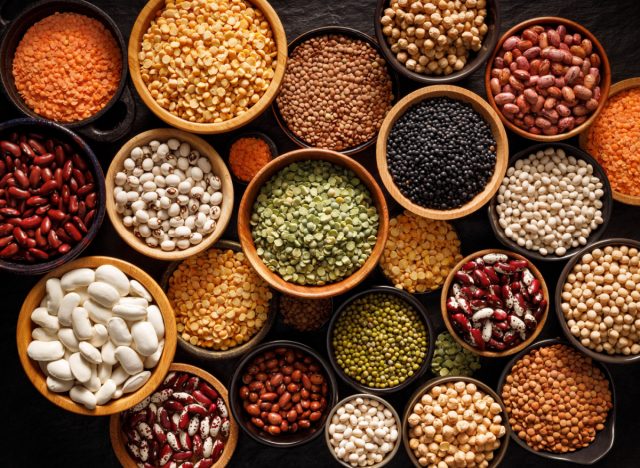
Beans and other legumes, like peas and lentils, are high in both protein and fiber—a combo that spurs weight loss. According to a 2020 Journal of Nutrition and Metabolism study, women who ate more beans and legumes (about 3 cups a month) had less body fat and smaller waists than those who didn't include as many legumes in their meal plans.
Pork tenderloin
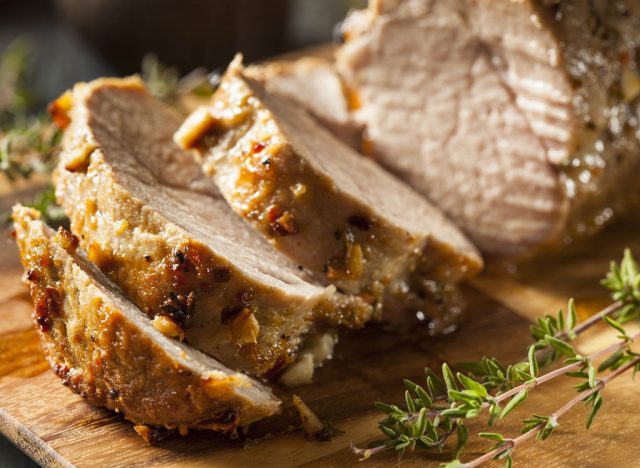
Unlike pepperoni and sausage, pork tenderloin is a lean cut that can help support your weight-loss goals. A 2012 study in the journal Nutrients found that overweight study participants who included lean pork in their diet for three months saw their waist size, BMI, and belly fat significantly drop. Even better: the study participants didn't appear to lose any muscle mass, suggesting that all the corresponding weight loss was from fat.
Salmon
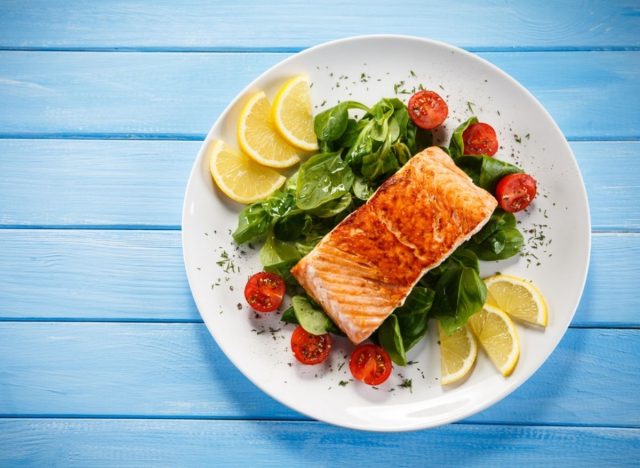
"Rich in protein and healthy fats, salmon can help you feel fuller and reduce cravings," Brooking says. And despite containing upwards of 24 grams of fat per fillet, there's no reason to fear salmon's fat content when trying to lose weight. In fact, it may be the reason why eating this oily fish is linked to weight loss. A 2012 study published in Nutrients showed that fatty seafood might help people lose weight, and the researchers suspect that these weight loss effects may be due to salmon's high amount of omega-3 fatty acids.
Avocado
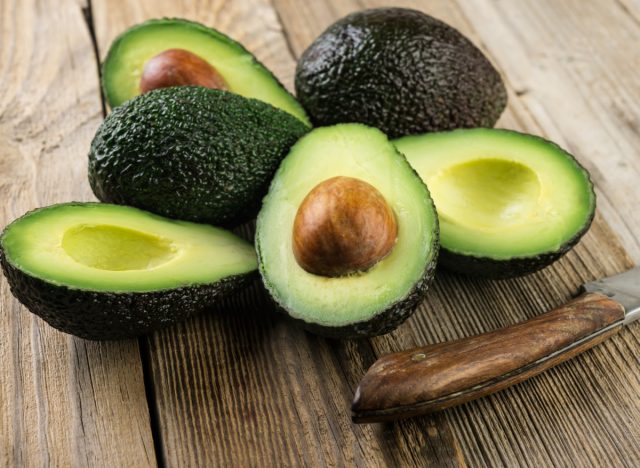
As if you needed another reason to bite into avocado toast for breakfast, a study in the journal Internal Medicine Review found that folks who ate about a third of an avocado (about 2.5 ounces) every day weighed less and had smaller waists than those who didn't. Additionally, those who enjoyed the creamy fruit were 33% less likely to be overweight or obese and 32% less likely to have a wider waist circumference.
Cauliflower
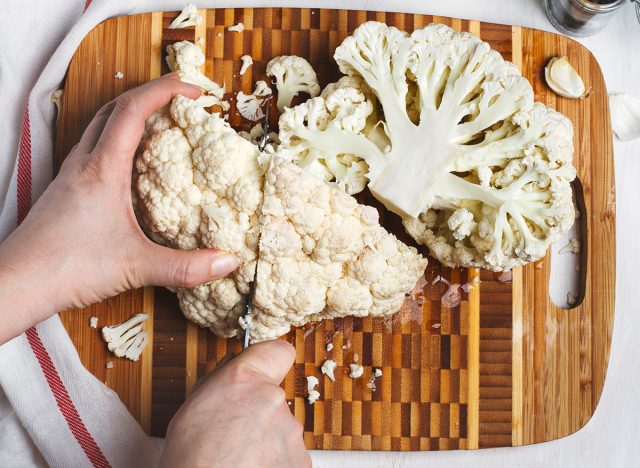
"Vegetables like cauliflower are high in fiber and low in calories, making them a great food for weight loss," Brooking says.
Two cups of cooked cauliflower provide 5.7 grams of fiber or 20% of your DV. As previously mentioned and supported by the 2017 study in the Annals of Internal Medicine assessing the effects of increased fiber consumption, people who ate more fiber were observed to lose more weight.
Spinach
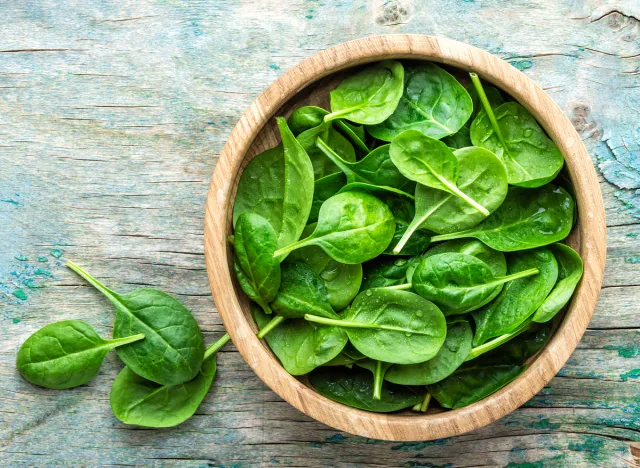
"Low in calories and high in fiber, leafy greens such as spinach can help you feel fuller and reduce calorie intake," says Brooking.
The research backs up Brooking's assertion. A review in Nutrients found that eating more than four servings of veggies a day reduced the risk of weight gain. One cup raw or 2 cups cooked equals a single serving of spinach.
Eggs
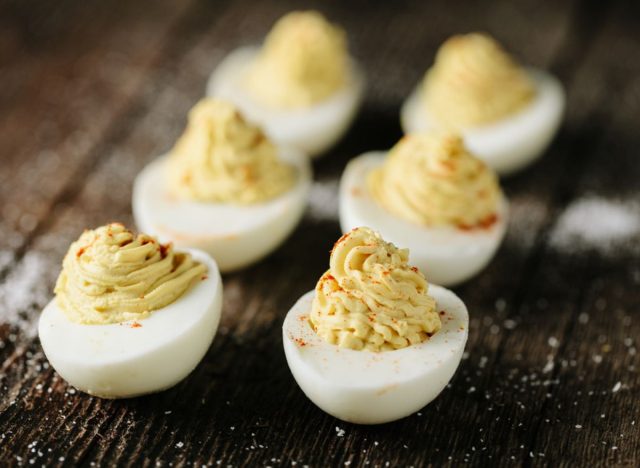
"Eggs are high in protein and healthy fats, making them a filling food that can help reduce appetite," says Brooking.
A study in Hormone Research in Pediatrics found that a high-protein egg breakfast helped adolescents with obesity lose weight when compared to a bread-based breakfast. Here's why: Eggs were shown to increase certain hormones that promote satiety.
Greek yogurt
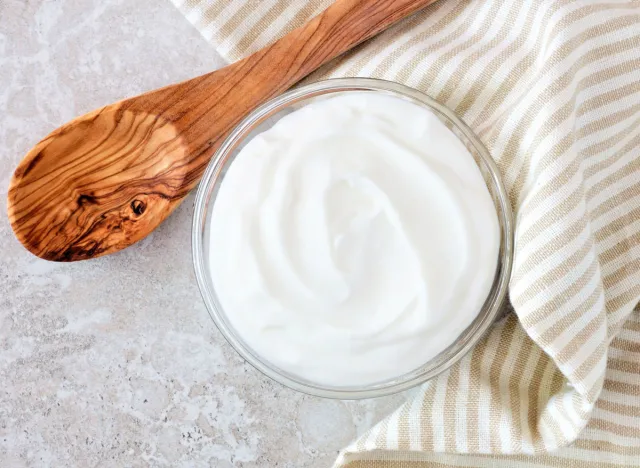
Greek yogurt is high in protein, which we know helps you feel full for longer and can promote weight loss—but it's also a rich source of gut-healthy probiotics. And those friendly gut bugs are great for your body composition, too. A small Journal of Functional Foods study found that probiotic yogurt can help alter the gut microbiome to help spur fat loss.
Raspberries
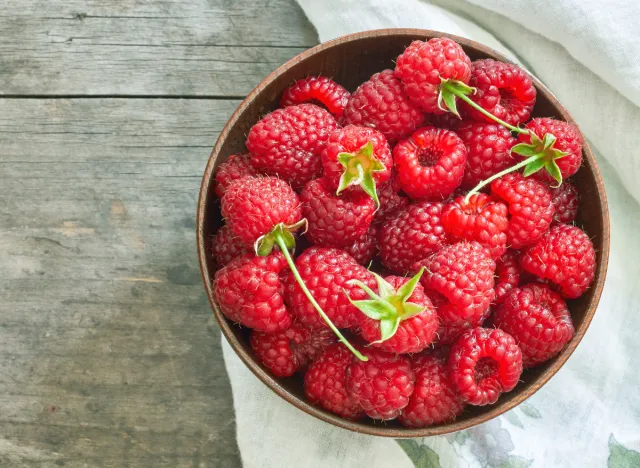
Raspberries are both low in calories and high in fiber. At just 64 calories, one cup of raspberries also contains about 8 grams of fiber, which is a whopping 29% of your DV. The previously referenced study in the journal Annals of Internal Medicine analyzing the impact of increased fiber consumption revealed that those who ate more fiber not only lost more weight, but also they improved their blood pressure and insulin resistance. So go ahead and top a cup of plain Greek yogurt with a handful or two of raspberries for a satiating snack that's high in protein and fiber.
Pistachios
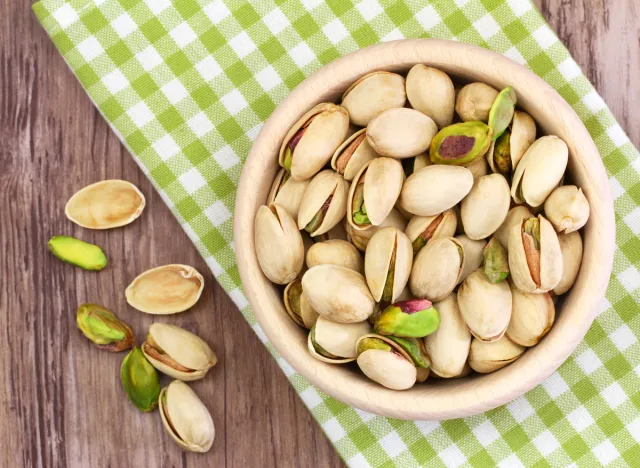
"Pistachios can help you feel full, resulting in eating less food at one sitting and being less hungry to eat again," says Brooking.
Indeed, a 2020 study in Nutrients showed that eating 1.5 ounces of pistachios a day was associated with weight loss and a smaller waist circumference. "
This is due to the many nutrients, such as fiber, protein, and healthy fats, as well as the need to chew, which slows the eating process," she adds. "In-shell pistachios have the added benefit of slowing eating time."
Almonds
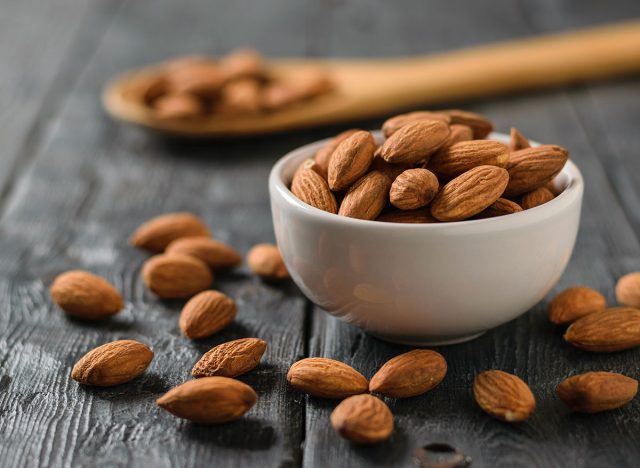
Whether you prefer snacking on almonds on their own or spreading a tablespoon of almond butter on toast, including this nut in your meal plan is a smart strategy for weight loss. Enjoying 1.5 ounces (about a handful) of almonds every day is linked to reducing both belly fat and leg fat, per a 2015 study published in the Journal of the American Heart Association.
Tofu
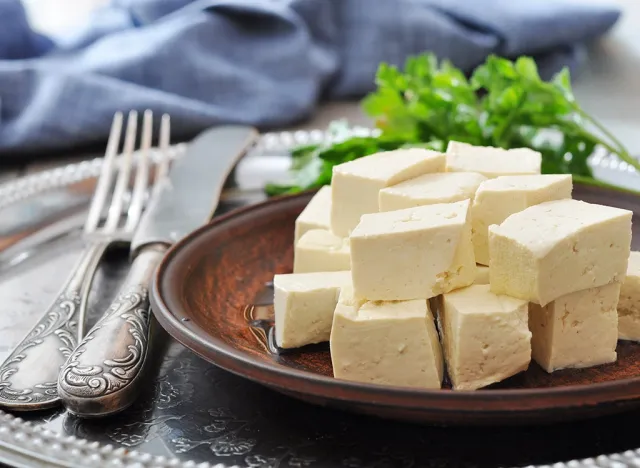
If you're trying to lose weight, setting a goal for yourself to include more plant-based protein sources like tofu into your meal plan might be a smart way to start. A 2015 study in the Journal of Diabetes Investigation found that people who ate more plant-based proteins had a lower risk of developing metabolic syndrome (a condition that includes obesity), suggesting that plant proteins may help maintain a healthy weight.
Blackberries
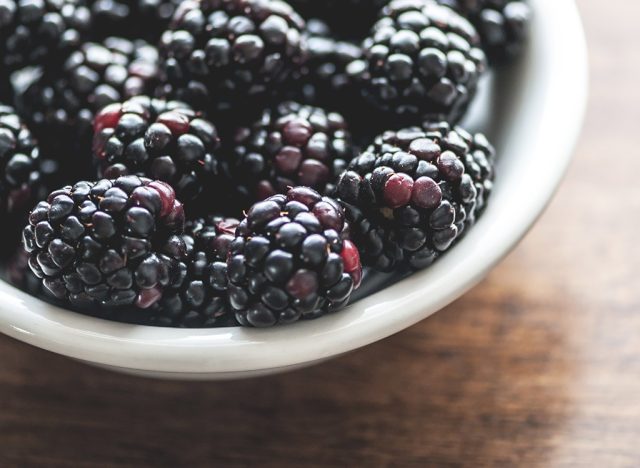
Blackberries are low in calories and high in fiber and antioxidants, making them a fantastic food for weight loss. In fact, blackberries boast some of the highest antioxidant contents of all fruits. Contrary to popular belief, eating more fruit is actually linked to weight loss, according to a 2016 study in the journal Nutrients. The researchers suggest that the fiber and phytochemicals in fruit may be responsible for their anti-obesity properties.
Walnuts
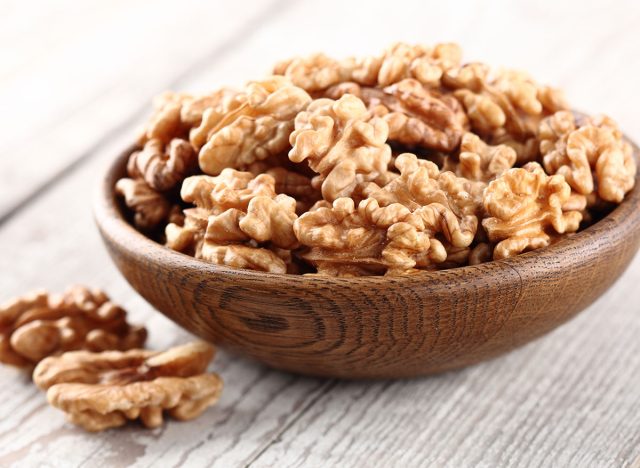
Whether you sprinkle them over oatmeal, bake them into low-sugar banana bread, or nosh on them on their own, walnuts are a weight loss workhorse. According to one study in the Nutrition Journal, eating a low-cal diet that included walnuts promoted weight loss and improved blood pressure and cholesterol levels.
Lean steak
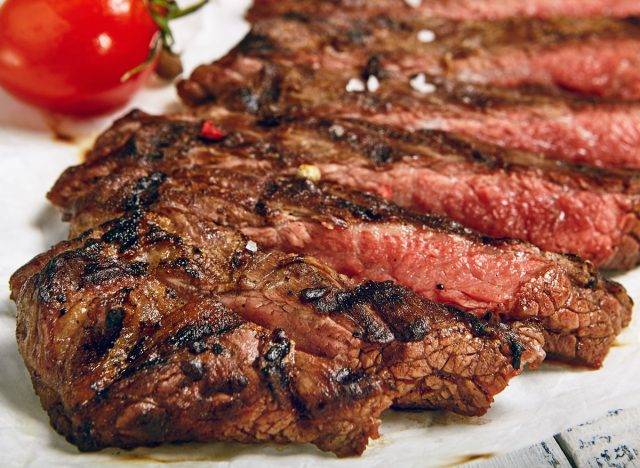
Getting bored of eating grilled chicken every night? Switch things up with steak. A 2017 study published in Obesity Science & Practice found that consuming lean beef as part of a high-protein diet decreased the study participants' weight without also subtracting from their muscle mass. To make sure you're picking the leanest beef at the grocery store, make sure to look for labels that say eye of round, top round, bottom round, round tip, top loin, top sirloin, and chuck shoulder or arm roasts, according to the USDA.
Celery
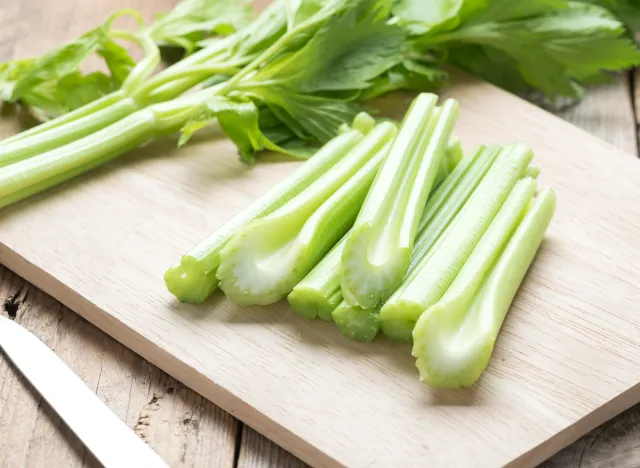
Grab some celery stalks and get dippin'. Celery's high water content makes it a good snack for weight loss or weight management, according to research by Cambridge University Press. Use crunchy celery as a vehicle to get more satiating protein in. Try pairing it with hummus, cottage cheese, or peanut butter.
Kale
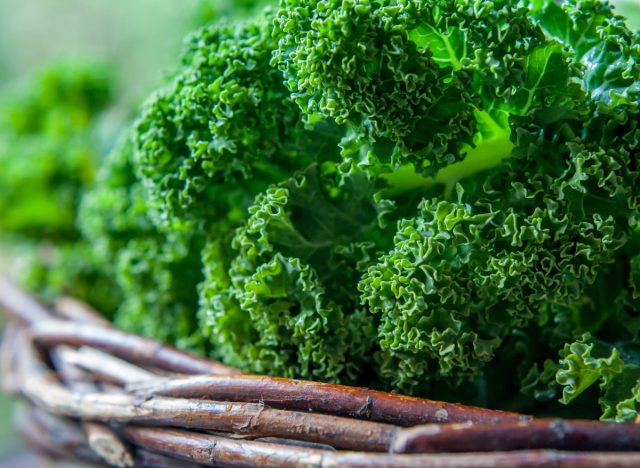
Next time you struggle with cooking fatigue, try tossing a simple kale salad for lunch or dinner. A review in Nutrients found that eating more than four servings of veggies each day reduced the risk of weight gain. Two cups of raw kale plus 2 cups of raw spinach in a salad will get you halfway to your goal. Add low-sugar cranberries along with diced cucumber and top it off with a piece of grilled salmon for a nutrient-dense bowl.
Swiss chard
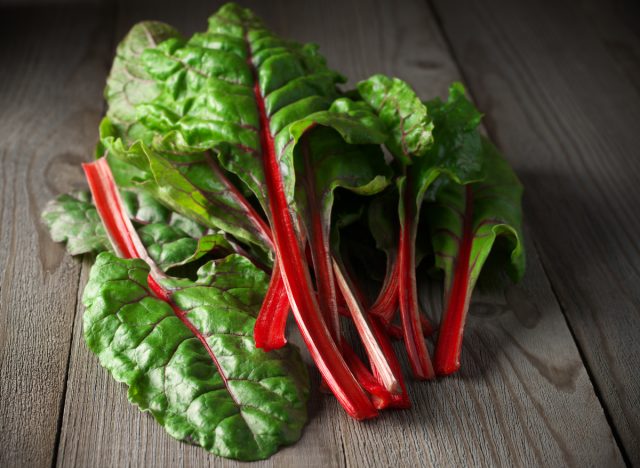
Another veggie low in calories and high in nutrients, Swiss chard is delicious sauteed with garlic and a bit of olive oil. Eating more than four servings of vegetables, like Swiss chard, a day reduced the risk of weight gain, per a review in Nutrients. So you'll want to make this fibrous veggie a part of your meal plan more often.
Blueberries
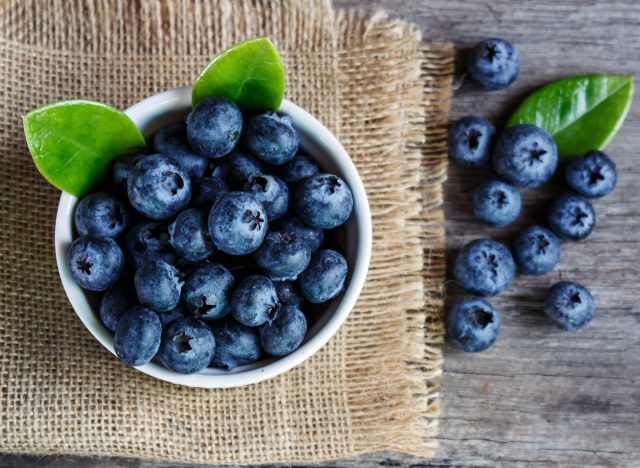
Consider blueberries your new go-to pre-workout snack. A 2023 study published in Nutrients found that eating the equivalent of one cup of fresh blueberries every day was able to boost endurance and help you burn more body fat while exercising. A win-win!
Brussels sprouts
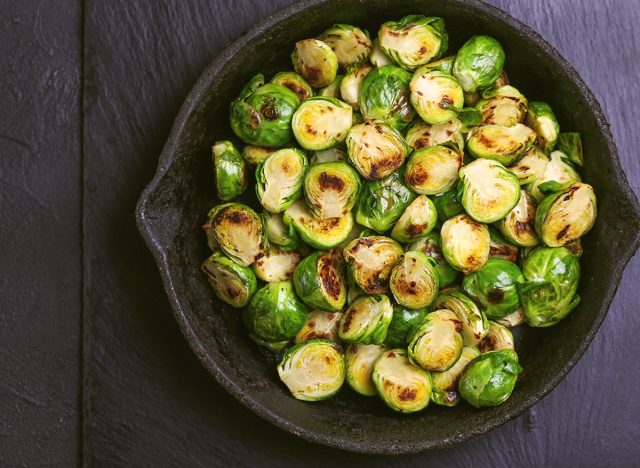
Brussels sprouts shouldn't be reserved for Thanksgiving only. Eating them year-round might just help you reach your weight loss goals. Not only are brussels high in fiber and low in calories, but a 2012 Journal of Functional Foods study showed that eating more veggies is linked to a reduced incidence of obesity. To help keep the calorie count low as you prepare them, skip the bacon and roast them with just a spritz of olive oil.
Whole grain oatmeal
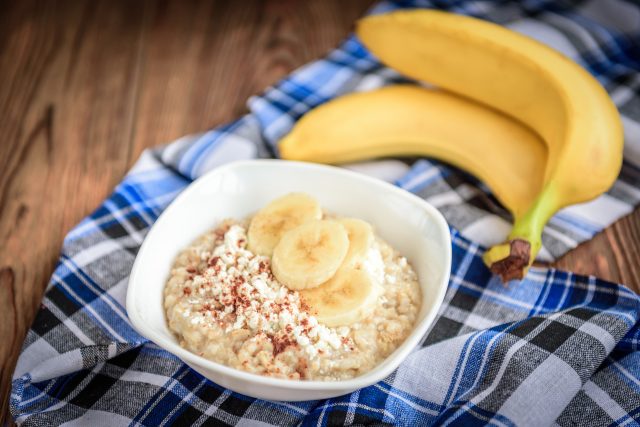
Waking up to a bowl of whole grain oats is a smart way to start the day. People who ate three or more servings of whole grains per day were observed to have 10 percent less belly fat than those who didn't eat any whole grains, per a 2010 study in The American Journal of Clinical Nutrition. A full cup of prepared oatmeal counts as two servings, so cooking up some oats for breakfast will get you three-quarters of the way to your daily whole-grain goal. Make your oats savory, and top the bowl with a fried egg for extra satiety power.
Green tea
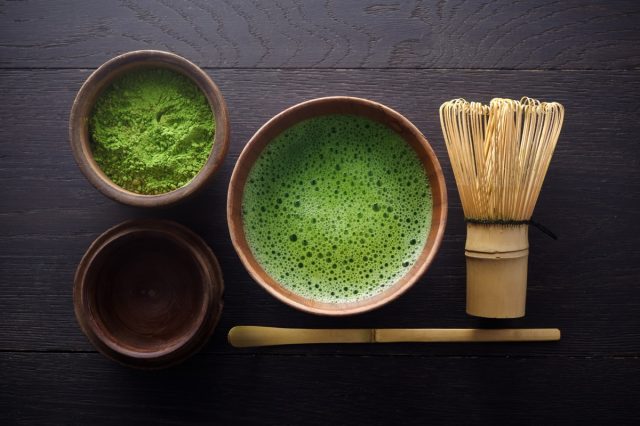
Though green tea is occasionally used in cooking, more often than not, it's served up in beverage form. However, it's still worth noting as one of the best foods for weight loss because if you regularly exercise, consuming green tea can be a simple way to potentially boost your weight loss efforts. For instance, one study published in The Journal of Nutrition found that exercisers who drank about 2.5 cups of green tea daily and worked out for 45 minutes three times a week were able to lose more belly fat than those who didn't have any green tea.
Water
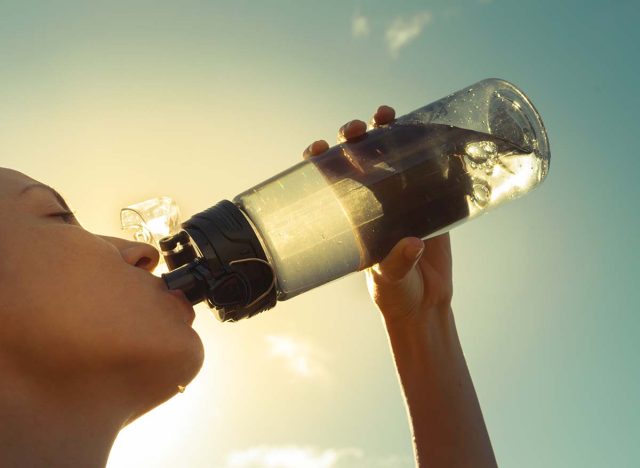
While also technically not a food, water is essential for weight loss. "Being well-hydrated helps to keep you feeling full, and water has zero calories," Brooking says. A study in the journal Obesity assessing the impact of water consumption relative to weight loss showed that premenopausal overweight women ages 25–50 who drank more than 4 cups of water a day lost about 4.4 more pounds than those who drank less H2O.
Here's another reason to hydrate with water instead of soda or fruit juice: "When you have high-calorie beverages, the brain doesn't register satiety the same way as it does with food, so you can end up drinking [or] eating excess calories to satisfy hunger," says Brooking.
- Source: https://www.ncbi.nlm.nih.gov/pubmed/23107521
- Source: https://pubmed.ncbi.nlm.nih.gov/19356912/
- Source: https://www.acpjournals.org/doi/10.7326/M14-0611
- Source: https://academic.oup.com/ajcn/article/92/5/1165/4597531
- Source: https://www.sciencedirect.com/journal/journal-of-functional-foods
- Source: https://www.ncbi.nlm.nih.gov/pmc/articles/PMC7294352/
- Source: https://www.mdpi.com/2072-6643/4/7/711/htm
- Source: https://www.mdpi.com/2072-6643/4/7/711/htm
- Source: https://www.ars.usda.gov/research/publications/publication/?seqNo115=341840
- Source: https://www.ncbi.nlm.nih.gov/pmc/articles/PMC6266069/
- Source: https://pubmed.ncbi.nlm.nih.gov/24923232/
- Source: https://www.sciencedirect.com/science/article/pii/S1756464612001399
- Source: https://www.ncbi.nlm.nih.gov/pmc/articles/PMC7400898/
- Source: https://www.ahajournals.org/doi/10.1161/JAHA.114.000993
- Source: https://onlinelibrary.wiley.com/doi/full/10.1111/jdi.12326
- Source: https://www.ncbi.nlm.nih.gov/pmc/articles/PMC5084020/
- Source: https://www.ncbi.nlm.nih.gov/pmc/articles/PMC5715655/
- Source: https://www.ncbi.nlm.nih.gov/pmc/articles/PMC5598025/
- Source: https://ask.usda.gov/s/article/How-do-I-choose-lean-meat-and-poultry#:~:text=The%20leanest%20beef%20cuts%20include,chuck%20shoulder%20and%20arm%20roasts.
- Source: https://www.cambridge.org/core/journals/proceedings-of-the-nutrition-society/article/exploring-the-myth-does-eating-celery-result-in-a-negative-energy-balance/28AA671F61633E705B0BD261338359C8
- Source: https://www.ncbi.nlm.nih.gov/pmc/articles/PMC6266069/
- Source: https://www.mdpi.com/2072-6643/15/6/1339
- Source: https://www.sciencedirect.com/journal/journal-of-functional-foods
- Source: https://academic.oup.com/ajcn/article/92/5/1165/4597531
- Source: https://academic.oup.com/jn/article/139/2/264/4750912
- Source: https://pubmed.ncbi.nlm.nih.gov/18787524/









